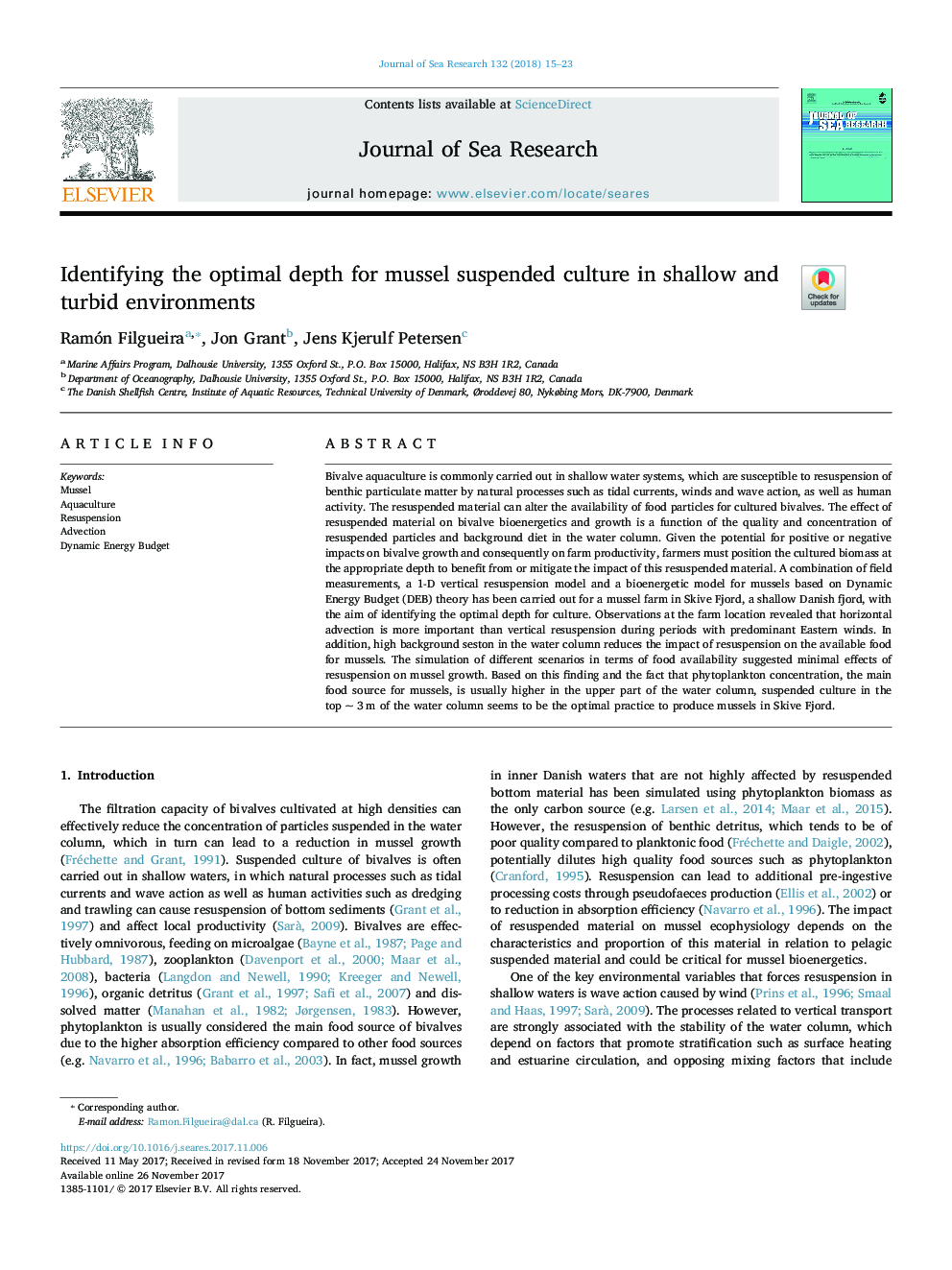| کد مقاله | کد نشریه | سال انتشار | مقاله انگلیسی | نسخه تمام متن |
|---|---|---|---|---|
| 8886177 | 1627443 | 2018 | 9 صفحه PDF | دانلود رایگان |
عنوان انگلیسی مقاله ISI
Identifying the optimal depth for mussel suspended culture in shallow and turbid environments
ترجمه فارسی عنوان
شناسایی عمق مطلوب برای کشت معلق در محیط های کم عمق و
دانلود مقاله + سفارش ترجمه
دانلود مقاله ISI انگلیسی
رایگان برای ایرانیان
کلمات کلیدی
موضوعات مرتبط
مهندسی و علوم پایه
علوم زمین و سیارات
اقیانوس شناسی
چکیده انگلیسی
Bivalve aquaculture is commonly carried out in shallow water systems, which are susceptible to resuspension of benthic particulate matter by natural processes such as tidal currents, winds and wave action, as well as human activity. The resuspended material can alter the availability of food particles for cultured bivalves. The effect of resuspended material on bivalve bioenergetics and growth is a function of the quality and concentration of resuspended particles and background diet in the water column. Given the potential for positive or negative impacts on bivalve growth and consequently on farm productivity, farmers must position the cultured biomass at the appropriate depth to benefit from or mitigate the impact of this resuspended material. A combination of field measurements, a 1-D vertical resuspension model and a bioenergetic model for mussels based on Dynamic Energy Budget (DEB) theory has been carried out for a mussel farm in Skive Fjord, a shallow Danish fjord, with the aim of identifying the optimal depth for culture. Observations at the farm location revealed that horizontal advection is more important than vertical resuspension during periods with predominant Eastern winds. In addition, high background seston in the water column reduces the impact of resuspension on the available food for mussels. The simulation of different scenarios in terms of food availability suggested minimal effects of resuspension on mussel growth. Based on this finding and the fact that phytoplankton concentration, the main food source for mussels, is usually higher in the upper part of the water column, suspended culture in the top ~ 3 m of the water column seems to be the optimal practice to produce mussels in Skive Fjord.
ناشر
Database: Elsevier - ScienceDirect (ساینس دایرکت)
Journal: Journal of Sea Research - Volume 132, February 2018, Pages 15-23
Journal: Journal of Sea Research - Volume 132, February 2018, Pages 15-23
نویسندگان
Ramón Filgueira, Jon Grant, Jens Kjerulf Petersen,
